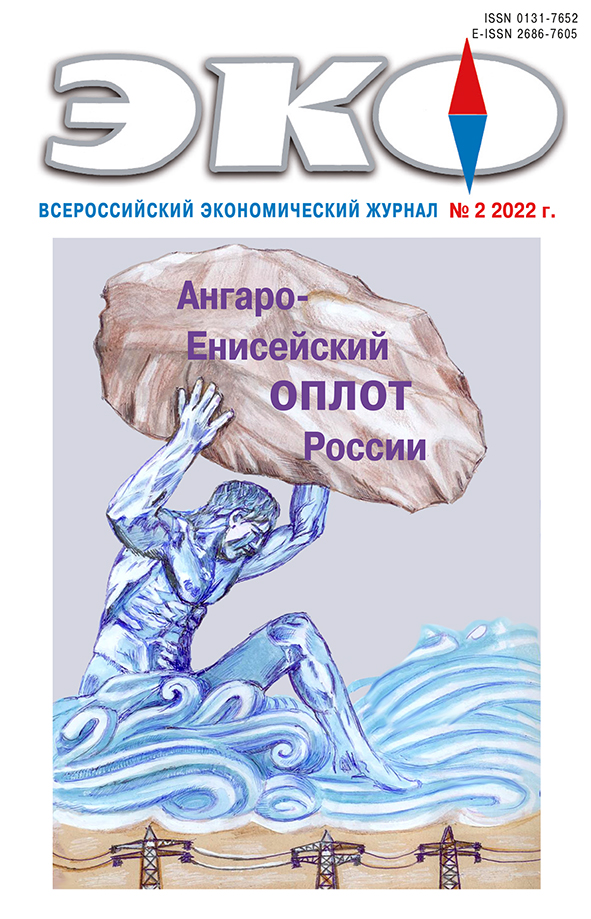Published 2022-02-03
How to Cite
1.
Teslya П. PPP Contract Risks. ECO [Internet]. 2022 Feb. 3 [cited 2026 Jan. 5];52(2):68-92. Available from: https://ecotrends.ru/index.php/eco/article/view/4383
Abstract
Public-private partnership is considered as an institution formed on a contract basis. The risks of PPP projects are considered in the light of the principal-agent problem. The paper identifies the main forms of opportunistic behavior, their origins and threats to the effectiveness and feasibility of PPP projects. On the basis of a discussion of global experience, conclusions are drawn about the high riskiness of PPP. The potential benefits measured by the VFM indicator are usually inflated in order to hide the opportunistic effects derived by the parties to PPP contracts. PPPs are often used to disguise the privatization of public property by private partners. The experience of China, which has actually abandoned the partnership between the state and private firms, is particularly noteworthy. The preference is given to the partnership between the state and state-owned companies.References
- Бас А. В. Экономические и институциональные ограничения оппортунистического поведения субъектов рыночной экономики. Саратов, 2009. 173 с.
- Куклинов М. Л., Югов В. В. Оппортунистическое поведение исполнителей ГЧП-проектов как фактор, тормозящий развитие автодорожной инфраструктуры России // Российский экономический журнал. 2020. № 3. С. 114–128.
- Шубина В. И. Атрибутивные признаки рисков оппортунизма в проектах государственно-частного партнерства / Сборник материалов Летней школы по институциональной и эволюционной экономике. Ханты-Мансийск, 2020. С. 206–231.
- Akintoye, A., Taylor, C., and Fitzgerald, E. (1998). “Risk analysis and management of Private Finance Initiative projects” Engineering Construction and Architectural Management, Vol. 5(1). Рp. 9–21.
- Albertus, R. (2019). The impact of information asymmetry on public-private partnership contracts: Theoretical pproach. African Journal of Business Management. Vol. 13 (17). Рp. 579–587. November. DOI: 10.5897/AJBM2019.8822
- Alfen, H. W. et al. (2009). Public-Private Partnership in infrastructure development: Case studies from Asia and Europe. Schriftenreihe der Professur Betriebswirtschaftslehre im Bauwesen. Bauhaus-Universität Weimar, No. 7.Available at: http://nbn-resolving.de/urn: nbn: de: gbv:27–20100922–160114–1.
- Blanc-Brude, F. (2008). Public-Private Risk Transfer – Public-Private Partnerships, Long-Term Contracts and Price Discovery, King’s College London
- Bullock, R. (2005). Results of railway privatization in Africa, Transport Papers TP –8, The World Bank Group, September.
- Chong, E., Huet, F., Saussier, S. and Steiner, F. (2007). Public-Private Partnerships and Prices: Evidence from Water Distribution in France, Review of Industrial Organisation, Vol. 29, No. 3. Рp. 149–169.
- De Bettignies, J. E., Ross, T. W. (2009). Public–private partnerships and the privatization of financing. International Journal of Industrial Organization. No.27,3. Pp. 358–368.
- DeGood, K. (2018). When Public-Private Partnerships Fail: A Look at Southern Indiana’s I-69 Project // In: Center for American Progress, February 15.Available at: https://www.americanprogress.org/issues/economy/ reports/2018/02/15/446720/public-private-partnerships-fail-look-southern-indianas-69-project/
- Eisenhardt, K. M. (1989). Agency theory: An assessment and review. Academy of Management Review. Vol.14. No. 1. Pp. 57–74.
- Engel, E., Fischer, R., Galetovic, A. (2003). Privatizing highways in Latin America: Is it possible to fix what went wrong? Economic Growth Center, Yale University July. Available at: http:// ageconsearch.umn.edu/bitstream/28456/1/dp03
- Fama, E. F., and Jensen, M. C. (1983). Agency problems and residual claims. Journal of Law and Economics, Vol.26. No.2. Рp. 327–349.
- Greenwood, Jr., Lawrence, C. (2006). Infrastructure Development in Indonesia: Moving Forward, Indonesia Infrastructure Conference and Exhibition, Jakarta, Indonesia.
- Iossa, E., Martimort, D., (2012). Risk Allocation and the Costs and Benefits of Public-Private Partnerships, RAND Journal of Economics. No.43(3). Pp. 442–474.
- Hartman, F., Snelgrove, P. (1996). Risk allocation in lump-sum contracts – Concept of latent dispute. Journal of Construction Engineering and Management, September. Pp.291–296.
- Knorr, A., Schomaker, R. (2016). The potential for corruption in public private partnership – theoretical aspects and some policy implications. Institutional Repository of Vadym Hetman Kyiv National Economic University. ISSN2411–4383 (Available at: ir.kneu.edu.ua).
- Klitgaard, R. (1998). International co-operation against corruption – Fighting Corruption Worldwide, Finance and Development, Vol. 35(1), World Bank, Washington D. C.
- McGrath, F. B., Cisarova, E., Eger, A., Gallop, P., Kalmar, Z., Vera, P. (2008). Never mind the balance sheet: The dangers posed by public-private partnerships in Central and Eastern Europe, CEE Bankwatch Network.
- Mu, R., de Jong, M., Koppenjan, J. (2011).The rise and fall of Public–Private Partnerships in China: a path-dependent approach. Journal of Transport Geography. Vol. 19. Issue 4. July. Pp. 794–806.
- Soomro, M.A., Zhang, X. (2011). An analytical review on transportation public private partnership failures. International Journal of Sustainable Construction Engineering & Technology (ISSN: 2180–3242) Vol. 2, Issue 2, December.
- Vinningg, A. R., Boardman, A. E. (2008). Public-private partnerships in Canada: Theory and evidence. Canadian Public Administration. Vol. 51 (1). Pp. 9–44.

